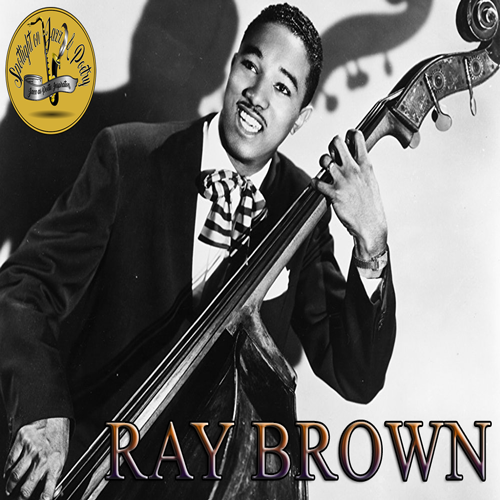Ray Brown was born October 13, 1926 in Pittsburgh, Pennsylvania and took piano lessons from the age of eight. After noticing how many pianists attended his high school, he thought of taking up the trombone but was unable to afford one. With a vacancy in the high school jazz orchestra, he took up the upright bass.
A major early influence on Brown’s bass playing was Jimmy Blanton, the bassist in the Duke Ellington band. As a young man Brown became increasingly well known in the Pittsburgh jazz scene, with his first experiences playing in bands with the Jimmy Hinsley Sextet (a) and the Snookum Russell band. After graduating high school, having heard stories about the burgeoning jazz scene on 52nd Street in New York City, he bought a one-way ticket to New York. He arrived in New York at the age of 20, met up with Hank Jones, with whom he had previously worked, and was introduced to Dizzy Gillespie, who was looking for a bass player. Gillespie hired Brown on the spot, and he soon played with such established musicians as Art Tatum and Charlie Parker. In 1948, Brown left Dizzy’s band to start a trio with Hank Jones and Charlie Smith.
From 1946 to 1951, Brown played in Gillespie’s band. Brown, along with the vibraphonist Milt Jackson, drummer Kenny Clarke, and pianist John Lewis formed the rhythm section of the Gillespie band. Lewis, Clarke, and Jackson eventually formed the Modern Jazz Quartet. Brown became acquainted with singer Ella Fitzgerald when she joined the Gillespie band as a special attraction for a tour of the southern United States in 1947. The two married that year, and together they adopted a child born to Fitzgerald’s half-sister Frances, whom they christened Ray Brown, Jr. Fitzgerald and Brown divorced in 1953, bowing to the various career pressures both were experiencing at the time, though they would continue to perform together.
From 1951 to 1965, Brown was a member of the Oscar Peterson Trio. The trio included a guitarist until 1958 (initially Barney Kessel, and then Herb Ellis). After Ellis left the group, Peterson decided to continue the trio with Brown and drummer Ed Thigpen. Brown recorded extensively as a session musician for producer Norman Granz during the 1950s (for Granz’s Clef, Norgran, and Verve record labels), often alongside Peterson. After leaving the Oscar Peterson Trio, Brown concentrated on studio work in Los Angeles.
